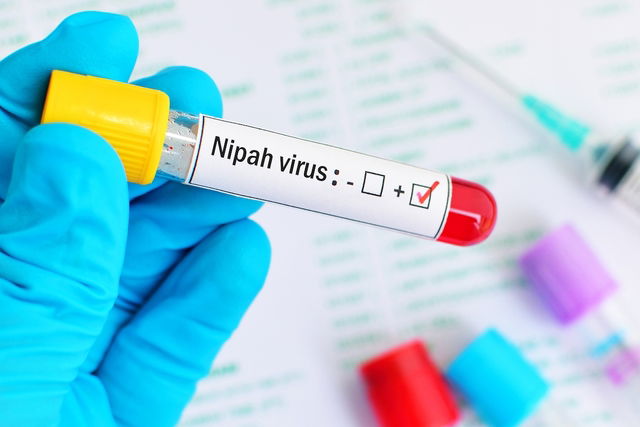The Nipah virus is a virus that belongs to the Paramyxoviridae family and is responsible for Nipah disease. It can be transmitted through direct contact with fluid or excrement from bats infected by this virus, or through person-to-person contact.
This disease was first identified in 1999 in Malaysia, however it has also been observed in other countries such as Singapore, India and Bangladesh. It is associated with flu-like symptoms that can evolve quickly and result in serious, life-threatening neurological complications

Main symptoms
In some cases, a Nipah virus infection can present asymptomatically or lead to mild flu-like symptoms that disappear within 3 to 14 days.
Moderate to severe infections can present with symptoms that appear 10 to 21 days after initial contact with the virus. The main symptoms are:
- Muscle pain
- Encephalitis
- Disorientation
- Nausea
- Fever
- Headache
- Decreased mental functioning, which can evolve into a coma within 24 to 48 hours
Symptoms of the Nipah virus infection can evolve rapidly, resulting in life-threatening complications such as seizures, personality disorders, respiratory failure or encephalitis. These complications are associated with chronic inflammation of the brain and and other related damage caused by this virus.
How it's transmitted
The Nipah virus is transmitted through direct contact with bats or pigs infected with the virus, or contact with the urine, saliva or blood of these animals.
In addition, transmission can also occur through the consumption of food, such as fruit, contaminated with body fluids from infected bats.
The Nipah virus can also be transmitted from person to person through contact with contaminated body fluids, such as saliva, blood, urine, feces or droplets or aerosols of respiratory secretions.
Confirming a diagnosis
The diagnosis of a Nipah virus infection must be confirmed by an infectious disease specialist or a general practitioner based on the initial assessment of the signs and symptoms presented by the patient. Special blood tests may be ordered which isolate and identify the virus to confirm the infection, and these ultimately help to guide the the most appropriate treatment.
The doctor may also order imaging tests, like a CT scan, to determine the severity of the infection.
Treatment options
To date, there is no specific treatment approach indicated for Nipah virus infection. The doctor may prescribe typically supportive interventions depending on the infection severity. These include rest, hydration, mechanical ventilation or symptom treatment.
Some in-vitro studies are being carried out with the antiviral drug ribavirin, however there is no evidence that it can effectively treat the infection. Studies with monoclonal antibodies in animals are also being carried out, but there are still no conclusive results. Furthermore, there is no vaccine to prevent this infection, and therefore overall avoidance of areas with high case numbers us generally recommended.
As it is an emerging virus with the potential to become endemic, the Nipah virus is on the World Health Organization's priority list for identifying treatments that could be used to treat the disease and develop vaccines for prevention.
Prevention measures
As there is still no effective treatment against the Nipah virus and no vaccine that can be used to prevent it, it is important to consider some measures to reduce the risk of infection and transmission of the disease, such as:
- Avoiding contact with potentially infected animals, especially bats and pigs
- Avoiding consuming possibly infected animals, especially when they are not properly cooked
- Avoid contact with fluids and excrement from animals and/or people infected with the Nipah virus
- Hand hygiene after coming into contact with animals
- Using masks and/or gloves when in contact with a person infected with the Nipah virus.
In addition, washing your hands with soap and water is essential, as this can eliminate infectious agents on the hands, including the Nipah virus.
